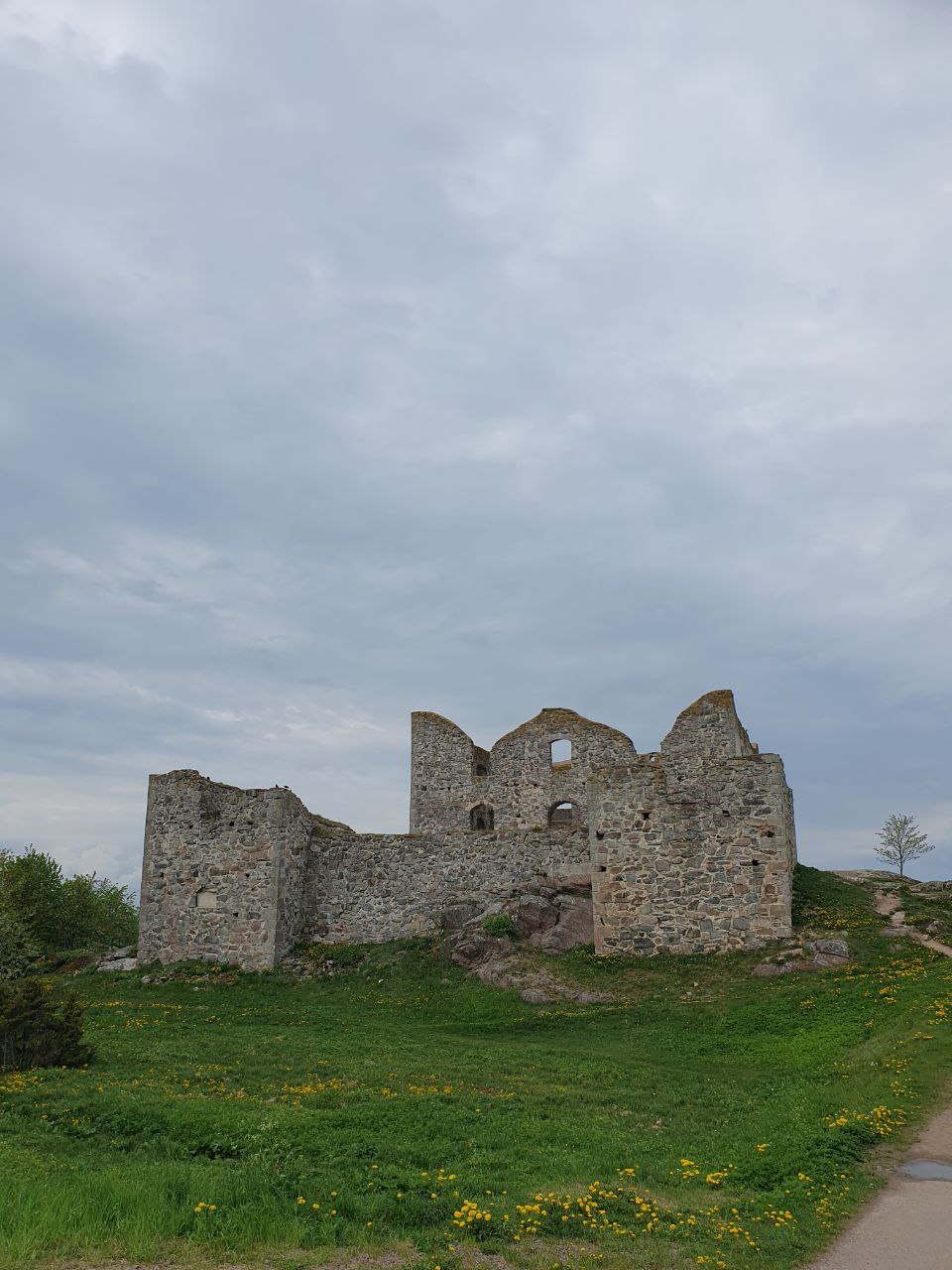🇬🇧 – below ⬇️
I Gränna socken, Småland 270 m.ö.h med utsikt över Visingsö ligger Braehus. En populärt plats att besöka då ruinen ligger vid Sveriges högst belägna motorväg, Vätternleden (E4) som går öster om Braehus. Det är en ståtlig slottsruin som riksdrotsen Perh Brahe den yngre lät påbörja bygget av år 1637. Han fick enorma egendomar av kungen och som riksdrots ansvarade han för den kungliga rättskipningen. Till stor del byggdes slottet av vätternsandsten som forslades upp för det branta berget och bygget var ej klart förrens mitten av 1650-talet.
När slottet var färdigbyggt bestod den av två fyrkantiga högtorn och en huvudbyggnad vid bergsranden ner mot Vättern med utsikt över just Visingsö och Gränna. Ursprungligen var Braehus tänkt som ett änkesäte till Brahes maka Kristina Katarina Stenbock, men då hon avled 1650 användes slottet till inkvartering av Brahes gäster. Efter Per Brahe den yngres död år 1680 så tömdes Braehus på inredningen och grevskapet drogs in till kronan under Karl XI:s reduktion. Hösten 1708 utbröt en eldsvåda i grannbyn Uppgränna och elden spred sig till Braehus som då brann ned till grunden.
Visingsö är den största ön i Vättern med många fornlämningar och ruiner. Visingsö har haft en stor betydelse i Sveriges historia och enligt legenden skapades ön av jätten Vist. Under 1100- och 1200-talen var Visingsö centrum för den svenska kungamakten och under 1600-talet utövade den mäktiga Braheätten sin makt från borgen Visingsborg på öns östra sida. Idag återstår bara ruiner av den borgen, likt det gör idag med Braehus.
🇬🇧
Braehus is located in Gränna parish, Småland 270 meters above the sea level with a view over the island called Visingsö. Braehus is a popular place to visit as the ruin is located by Sweden’s highest located motorway, the Vätternleden (E4) which runs east of Braehus. It is a huge castle ruin that the regent Perh Brahe the Younger had the construction begin in 1637. He received enormous properties from the king and as regent he was responsible for the royal administration of justice. To a large extent, the castle was built of Vättern sandstone that was forced up the steep mountain and the construction was not completed until the middle of the 1650s.
When the castle was completed, it consisted of two square high towers and a main building at the edge of the mountain down towards the Lake Vättern with a view over Visingsö and Gränna. Originally, Braehus was intended as a widow’s seat for Brahe’s wife Kristina Katarina Stenbock, but when she died in 1650, the castle was used as accommodation for Brahe’s guests. After the death of Per Brahe the Younger in 1680, Braehus was emptied and the county was transferred to the crown during Karl XI’s reduction. In the autumn of 1708, a fire broke out in the neighboring village of Uppgränna, and the fire spread to Braehus, which then burned down to the ground.
Visingsö is the largest island in Vättern with many ancient sites and ruins. Visingsö has had a great importance in Sweden’s history and according to the legend, the island was created by the giant Vist. During the 12th and 13th centuries, Visingsö was the center of the Swedish royal power and during the 17th century the powerful kin of Brahe exercised it’s power from the fort ‘Visingsborg’ located on the eastern side of the island. Today only ruins of the fort remains, as it does today with Braehus.

